At the end of 2022, Chris White explained the work of Weta FX on the 3rd season of The Umbrella Academy. He also worked on Avatar: The Way of Water.
In 2019, Sidney Kombo-Kintombo told us about the animation work by Weta FX on Avengers: Endgame. He went on to work on The Falcon and the Winter Soldier, Eternals and She-Hulk: Attorney at Law.
How did it feel to enter to the MCU?
Chris: Being a fan of the first Black Panther, I was excited to enter the MCU on this film. It felt like we were contributing to an entire universe, not just a single film.
Sidney: I have been working with Marvel since 2013, and I always enjoy our collaborations.
What was the collaboration with Director Ryan Coogler and the VFX Supervisor Geoffrey Baumann like?
Chris: The collaboration was terrific with both Geoff and Ryan. They immediately fold you into the team and welcome your suggestions and ideas. Each gives strong direction on what they would like to achieve while simultaneously valuing the crew’s input.
Sidney: It was my first time working with them – I was struck by Ryan’s humility and the passion he had for the project. We always try to understand what the director’s vision for the show is, but for this one it felt like there was something more there. This might be linked to the tragic death to Chadwick Boseman, but it felt like we were part of something that was more than just creating VFX. It was humbling to be invited to be part of it by Ryan, Geoffrey and Nate Moore, the Marvel Producer.
What were their expectations and approach to the visual effects?
Chris: It was essential for them to have a strong base in realism while having creative control to tell the story. Early in the project, we devoted a significant amount of time to researching and establishing a scientific understanding of the effects we needed to create. For our sequences, this was in an underwater world. From this, we crafted a shared language of the principles we determined so that we could discuss both technical and creative notes.
Sidney: Our role on this film was to sell the underwater world – visually, aesthetically, and creatively. Ryan wanted a grounded introduction to the city of Talokan and for the richness of the culture to be portrayed clearly. As we created the previs for the journey to Talokan, we needed to make sure the audience would feel influences from Mayan culture and understand how they evolved underwater. We wanted to get it as close to reality as we possibly could.
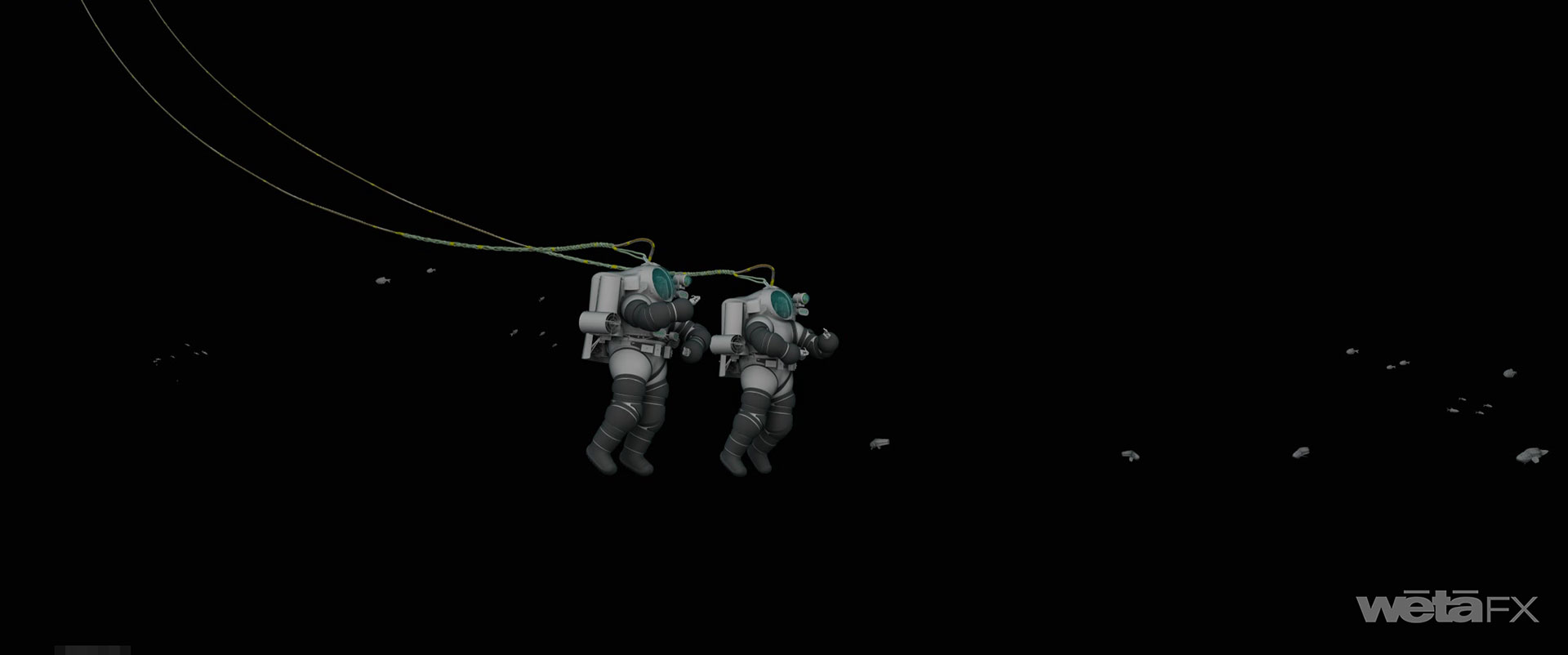
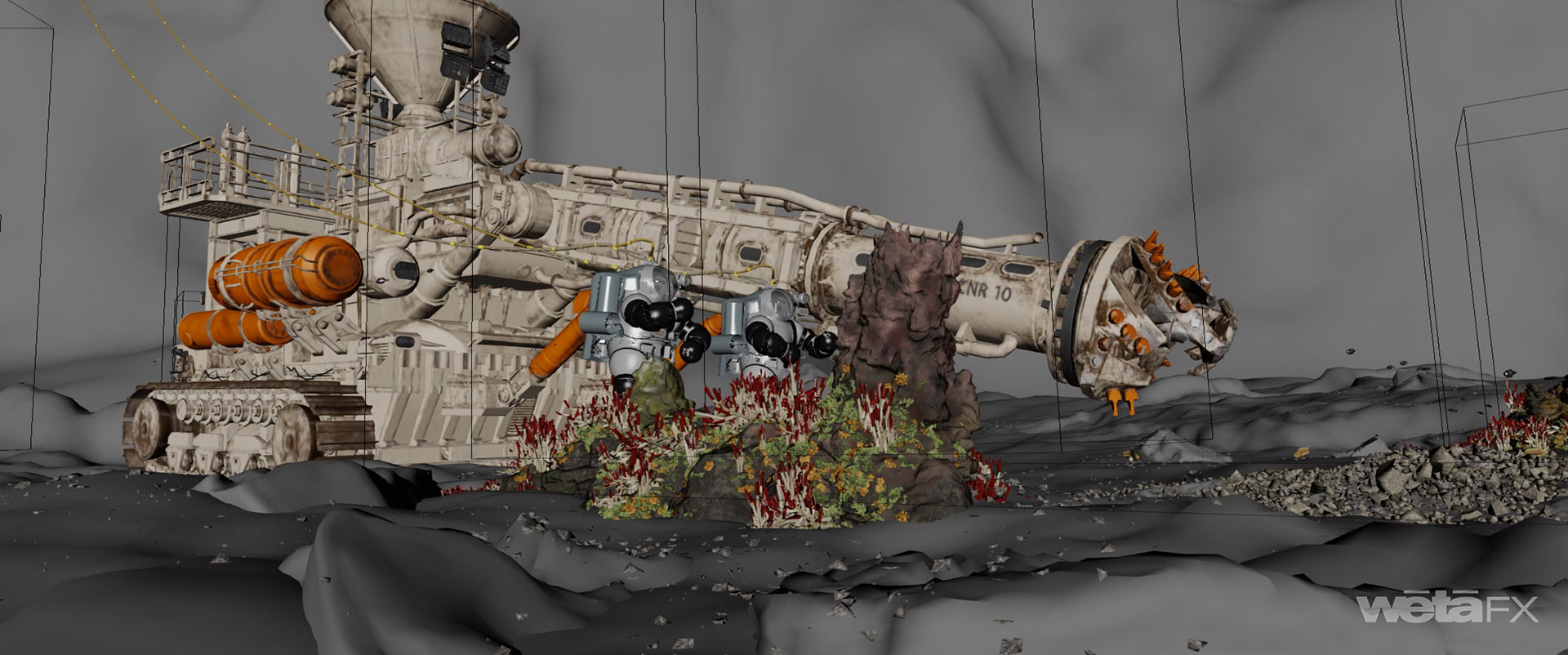
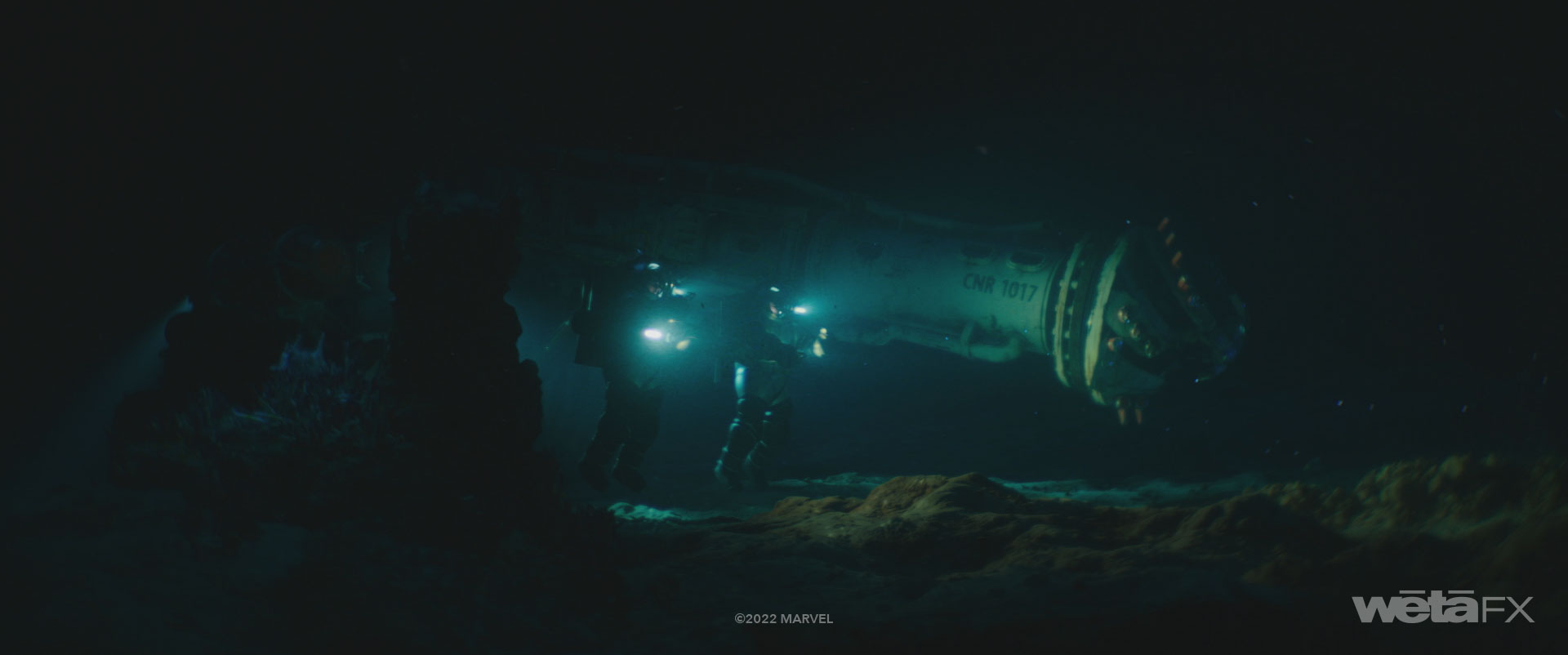
How did you organize the work with your VFX Producer?
Chris: At the project’s beginning, we created a ‘book’ on how we would approach the work. Even though it was early days and sequences would still be turned over, we wanted to go through the work and plan as best as we could. This work breakdown included research projects, technical approaches, creative tool sets, crewing, and on-set approaches. We continued to refine the book as each sequence came in.
Sidney: Our VFX Producer Nicky Muir was great in understanding our needs and communicating them to Marvel, so we could easily get in touch with Geoff or Ryan if we had any questions. Nicky rocks!
What are the sequences made by Weta FX?
Chris: Our work revolved around the deep underwater sequences. We introduced the audience to the world of Talokan, the mining sequences, and parts of the end battle.
We also developed digital tools to replicate the optical effects of the lenses used on the film. These tools created a consistent look between visual effects shots and filmed live-action footage.
Can you elaborates about the design and the creation of the Talokan city?
Chris: We worked closely with the Production Designer Hannah Bleacher for the creation of Talokan city. She shared concept art, models, previs, cultural history, and inhabitants with us. From this, we worked closely to build six hundred assets that would make up the city. The architecture of over 3400 buildings was based on Mesoamerican designs, then populated with citizens, plants, and marine life.
Sidney: We also needed to create a camera path for the introduction to Talokan that would allow the audience to catch glimpses of the city’s beauty as Namor shows Shuri around.
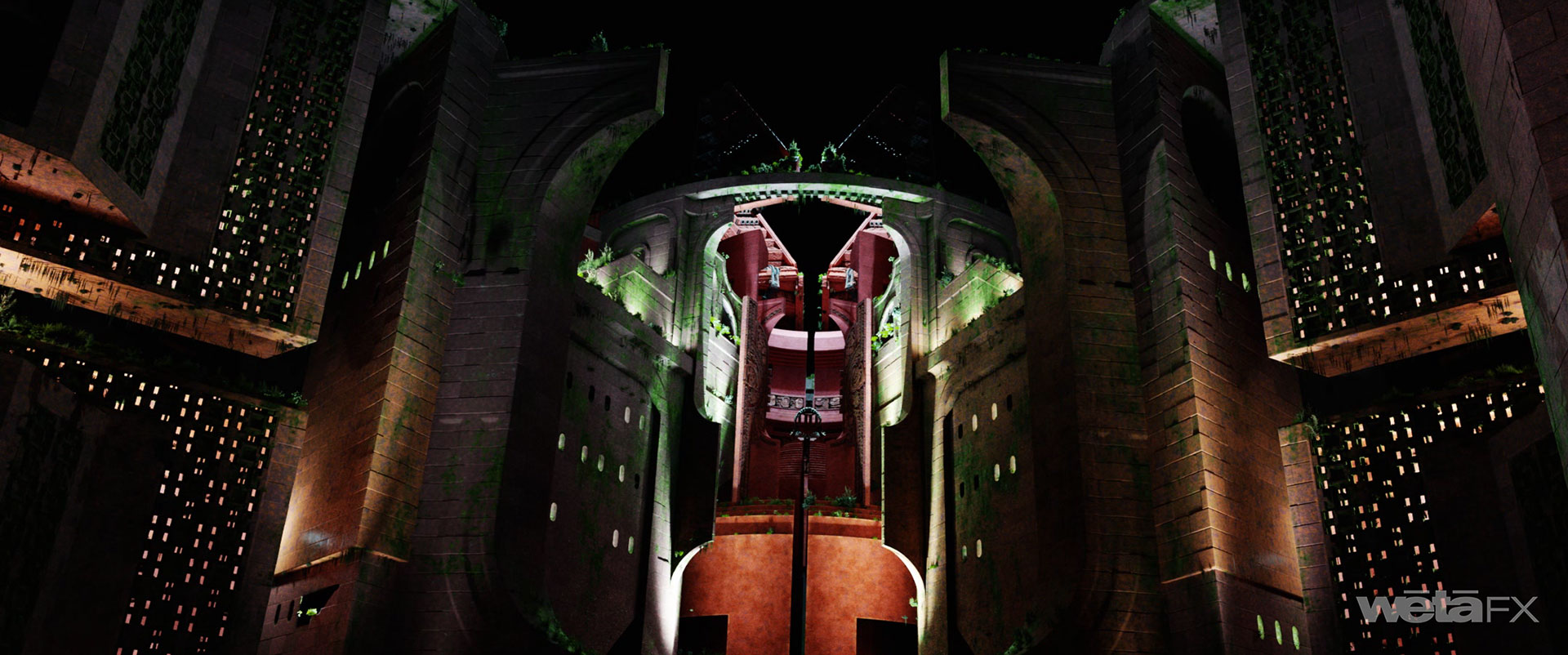
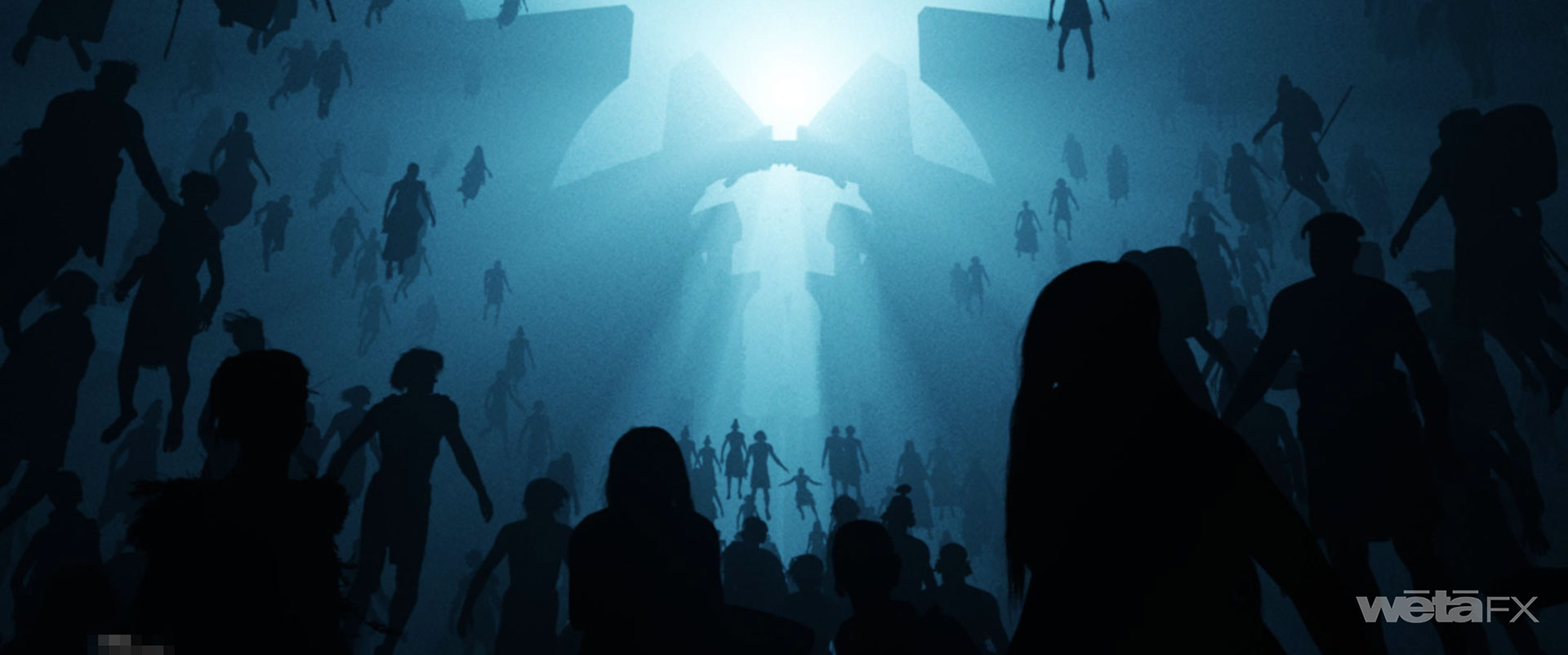
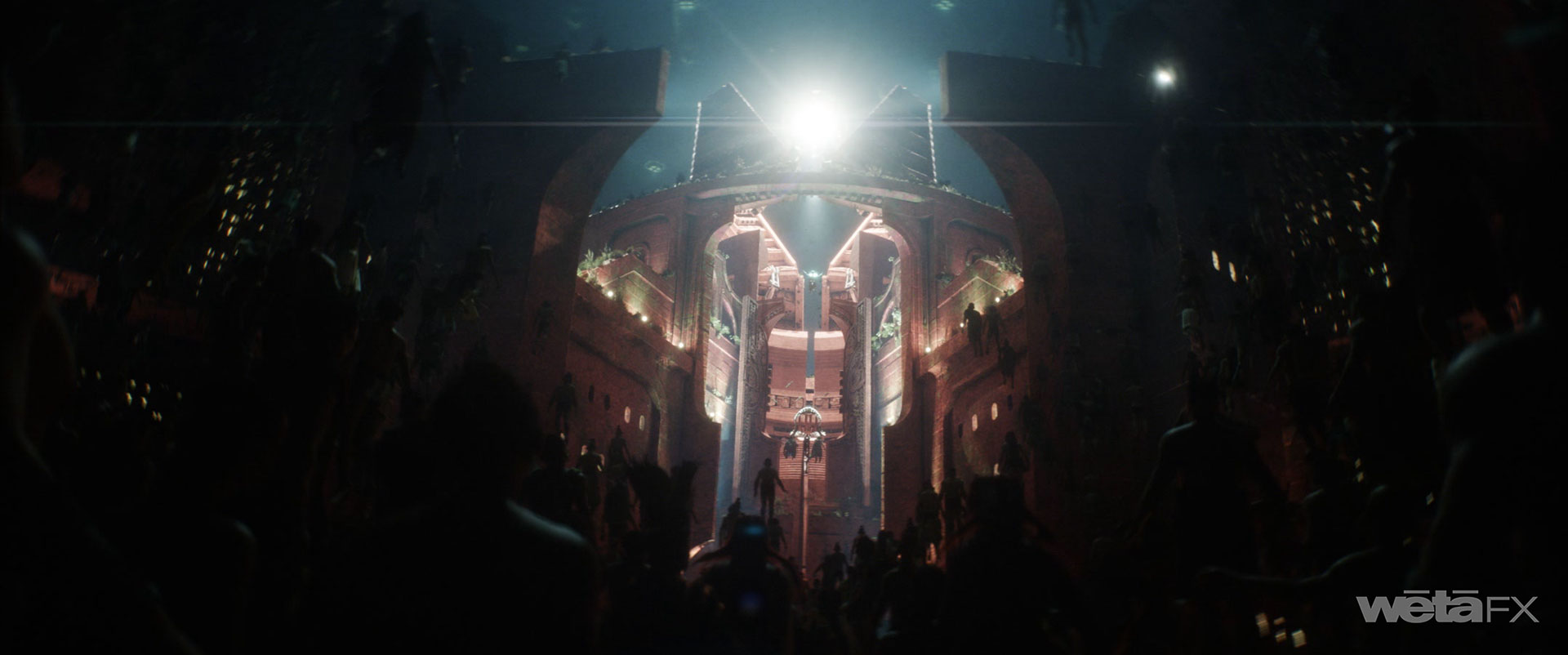
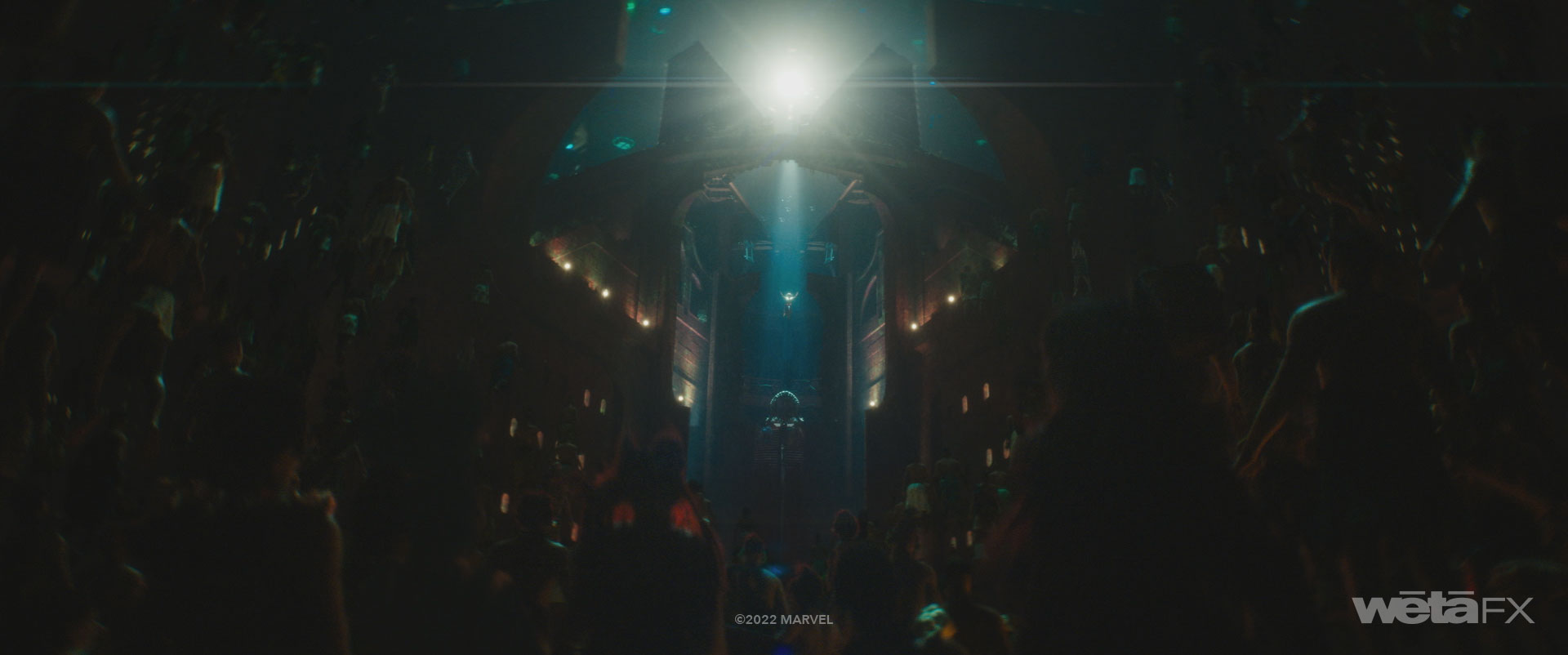
What kind of references and influences did you receive for this environment?
Chris: Within the production design book were references to real-world inspiration. We would also do our research to drill down into the fine details when creating digital assets. They included texture, materials, movement studies, design, etc.
Which location was the most complicate to create?
Chris: The city of Talokan was the most complex environment.
How does the underwater light affects your work?
Chris: The way light is absorbed and scattered underwater can bring many complexities. For example, colors like red are quickly absorbed. This natural property of water was a challenge as our main throne area has red walls. Therefore, we developed tools to help balance natural physics while fulfilling the creative intent.
Sidney: The notion of the blue wall was the biggest consideration for us in animation – we needed to show the underwater world to the audience, yet consider the fact that at that depth, visibility was pretty low. We needed our character to swim close to edge of that visibility so they could emerge out of the darkness – we also used this technique to introduce creatures like the whale.

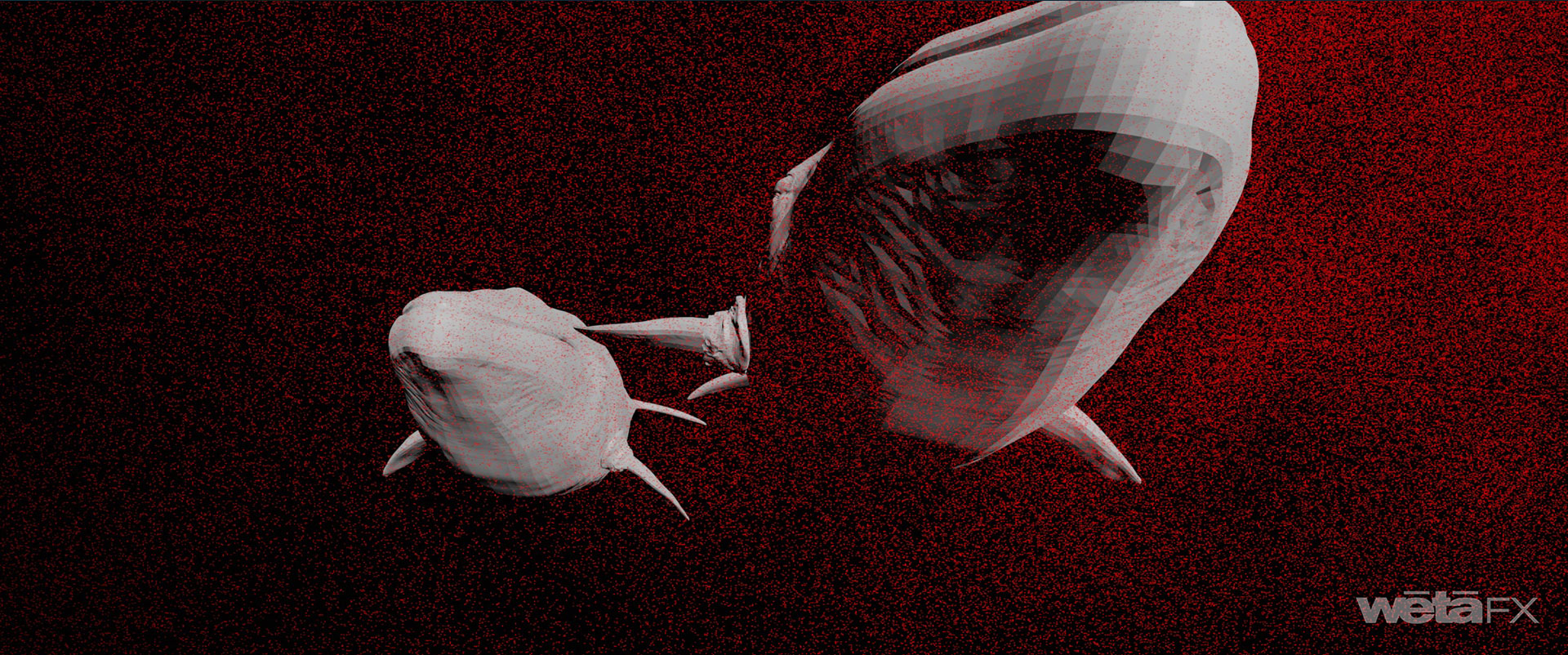
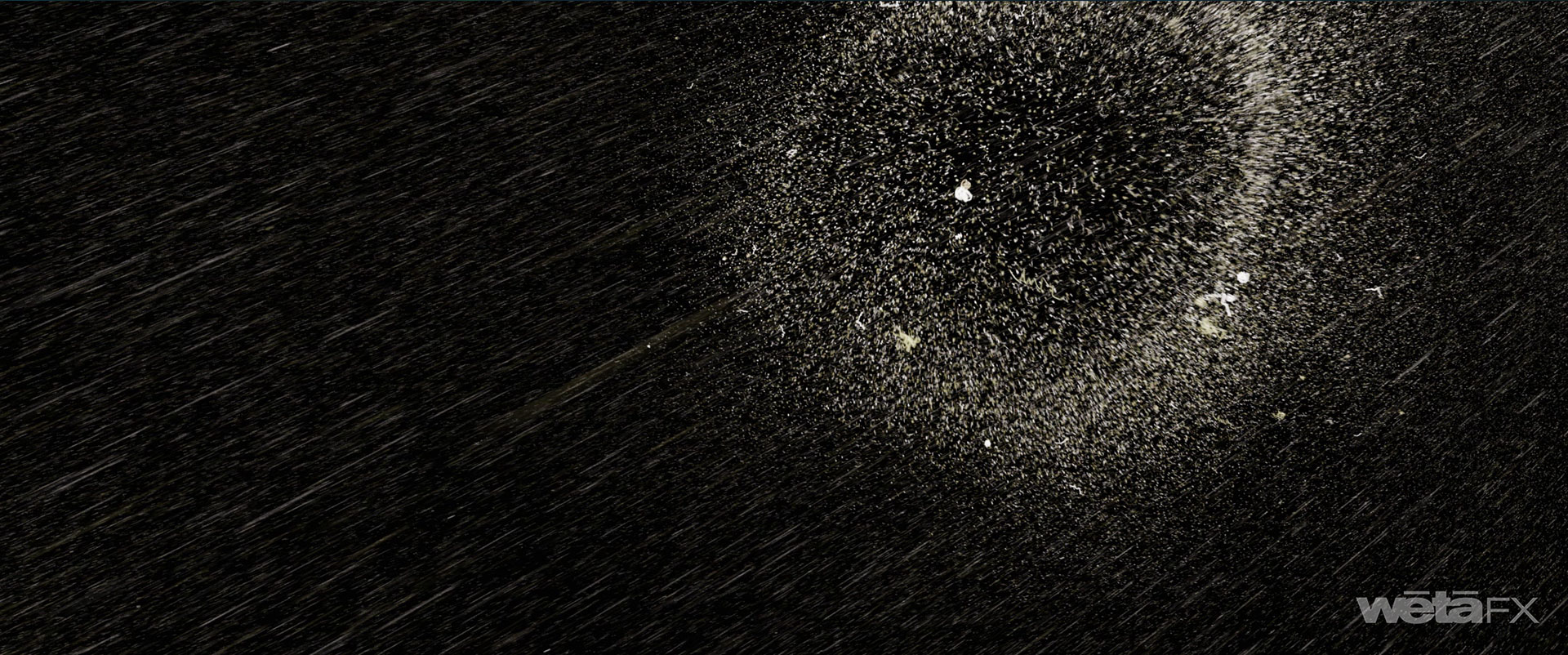
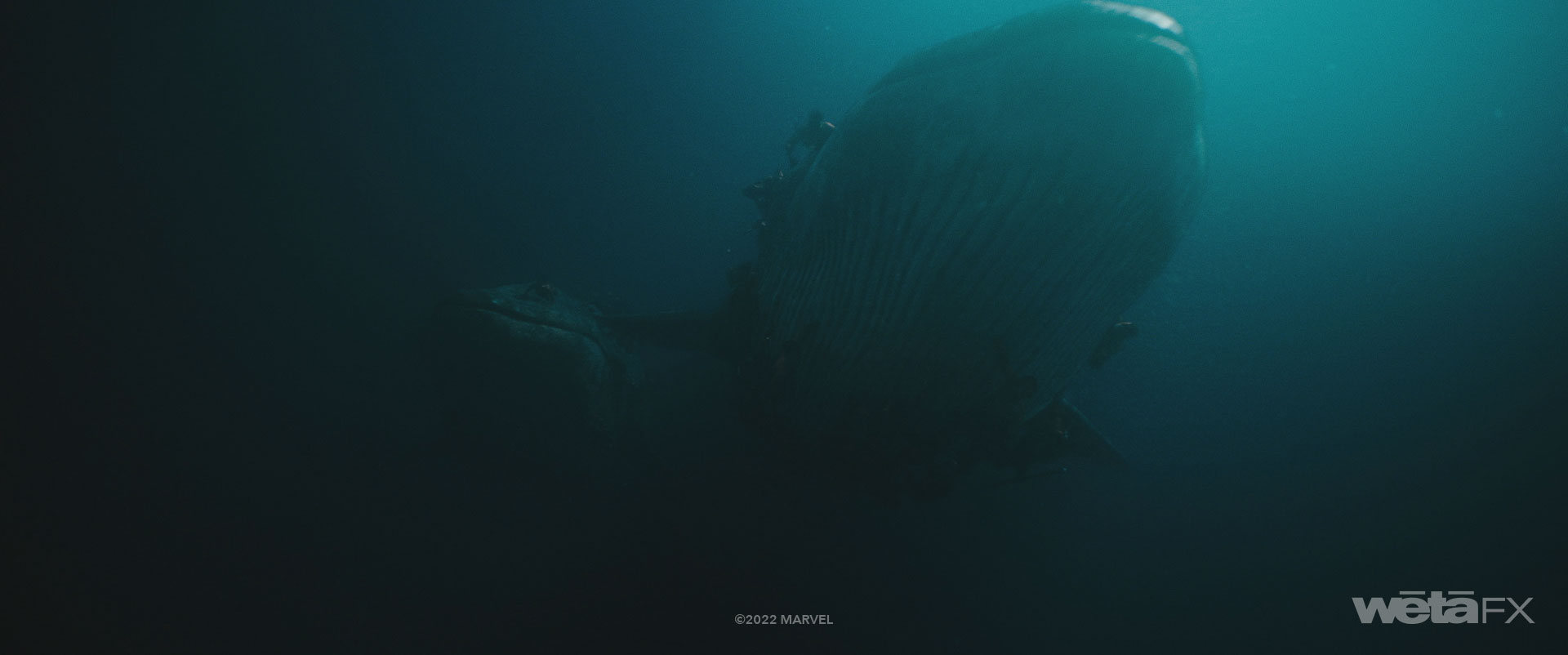
Can you tell us more about the creation of the Talokan Sun?
Chris: The sun is an obsidian sphere emanating brilliant light. At its core is a filament surrounded by a whale fall, wrapped in kelp. As the light gets refracted, there is a slight prismatic effect. A digital version was constructed based on a practical design to illuminate the CG city.
How were the underwater sequences filmed?
Chris: Underwater sequences were filmed in two ways. Actors were shot underwater in tanks for our ‘wet-for-wet’ shots. For other sequences, actors were shot ‘dry-for-wet.’ In this scenario, actors were shot on the stage on wires or rigs to help them ‘float.’ We would digitally replace hair, clothing, and limbs to add an underwater look.
Sidney: For animation, we made sure that for the digital shots the CG camera was affected by the digitally generated current, so it felt like the camera was actually underwater and not on a smooth CG track.
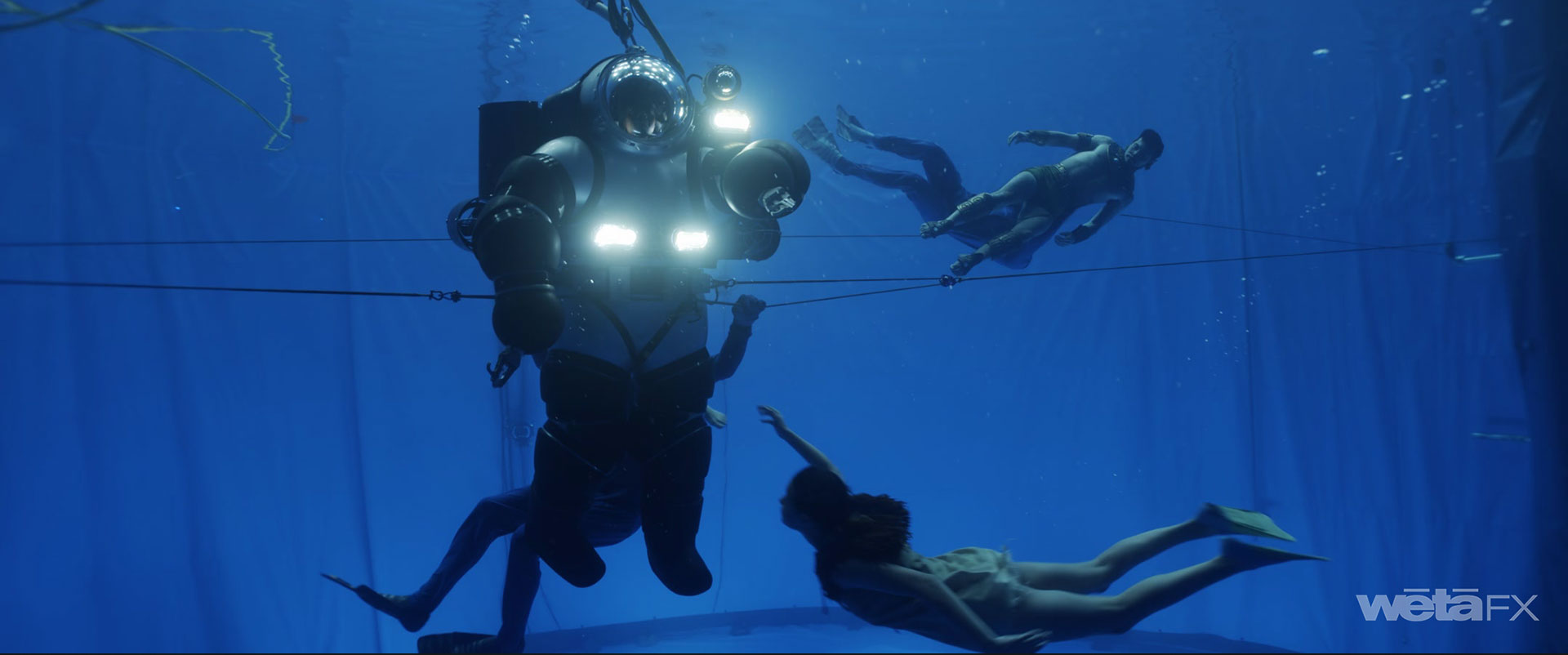
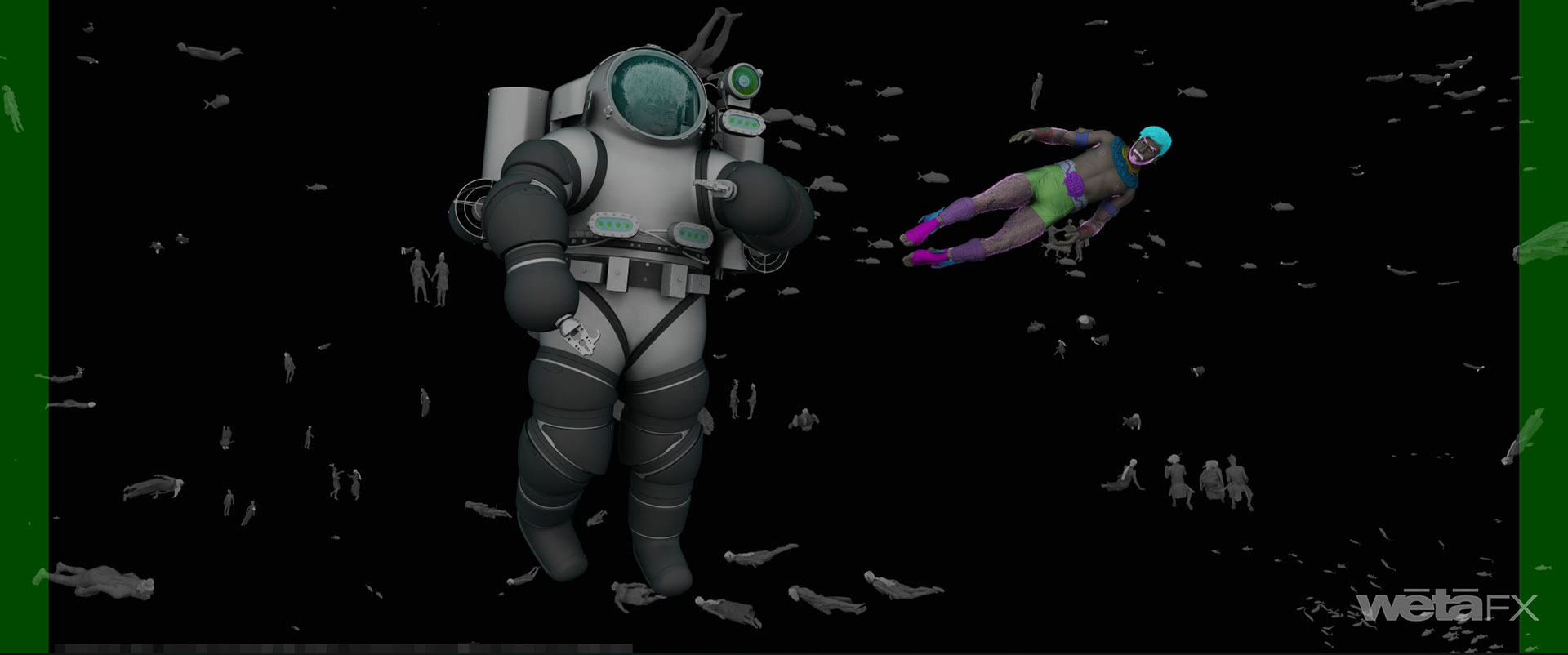
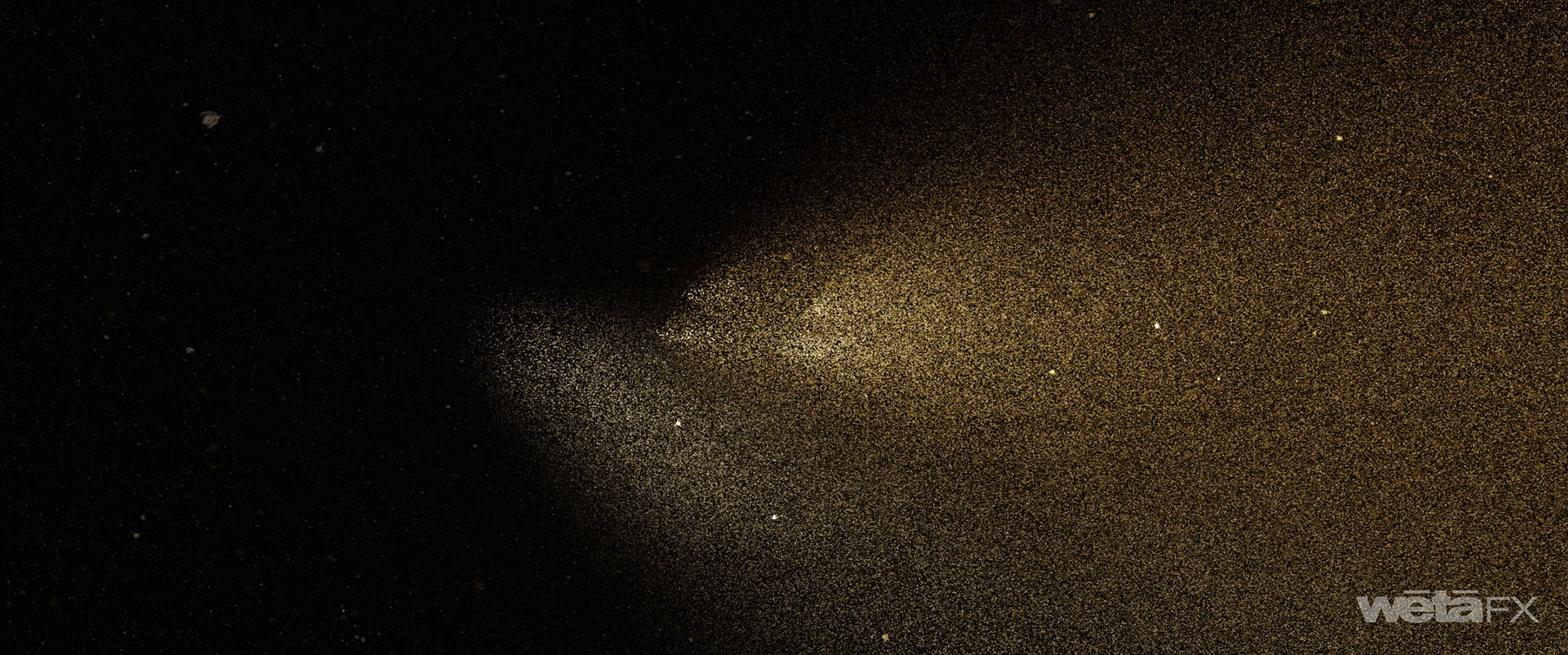

How did you create the digital doubles?
Chris: We created our digital doubles to match the on-set characters and extras. With the loss of specular reflections and a faster exiting of light through the skin, people tend to light flatter underwater. Therefore, we gave extra attention to maintaining skin tones and musculature underwater.
What was the main challenges of the underwater sequences?
Chris: Some of the main challenges of underwater work are water lighting and rendering, simulations of character clothing and particulate, and animation.
What was your approach for the character animations?
Sidney: We always try to use reference, even when we think we know how things are supposed to move. We gave Marvel a list of different swimming techniques that we wanted to see and they provided us with underwater reference that was shot on set.
Chris: That motion data became the basis of character animation, which we augmented and adjusted where needed.
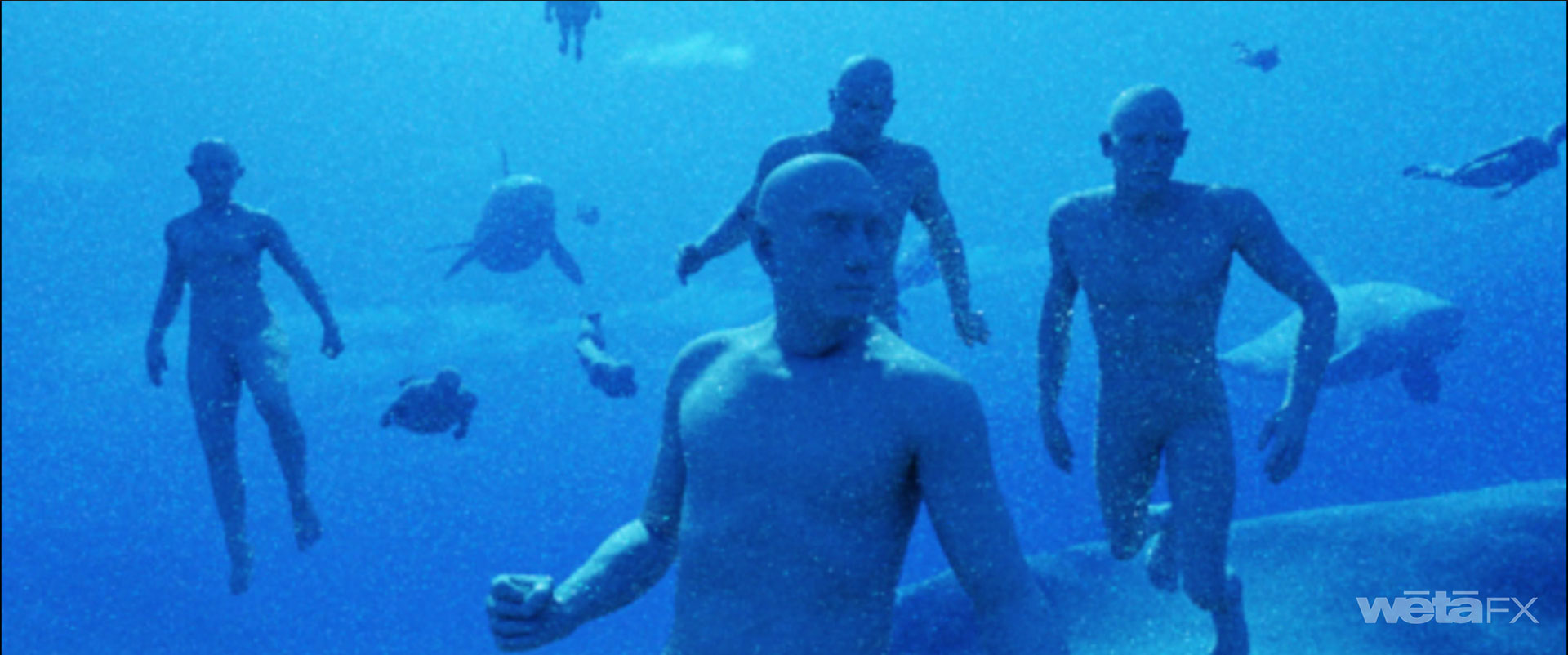
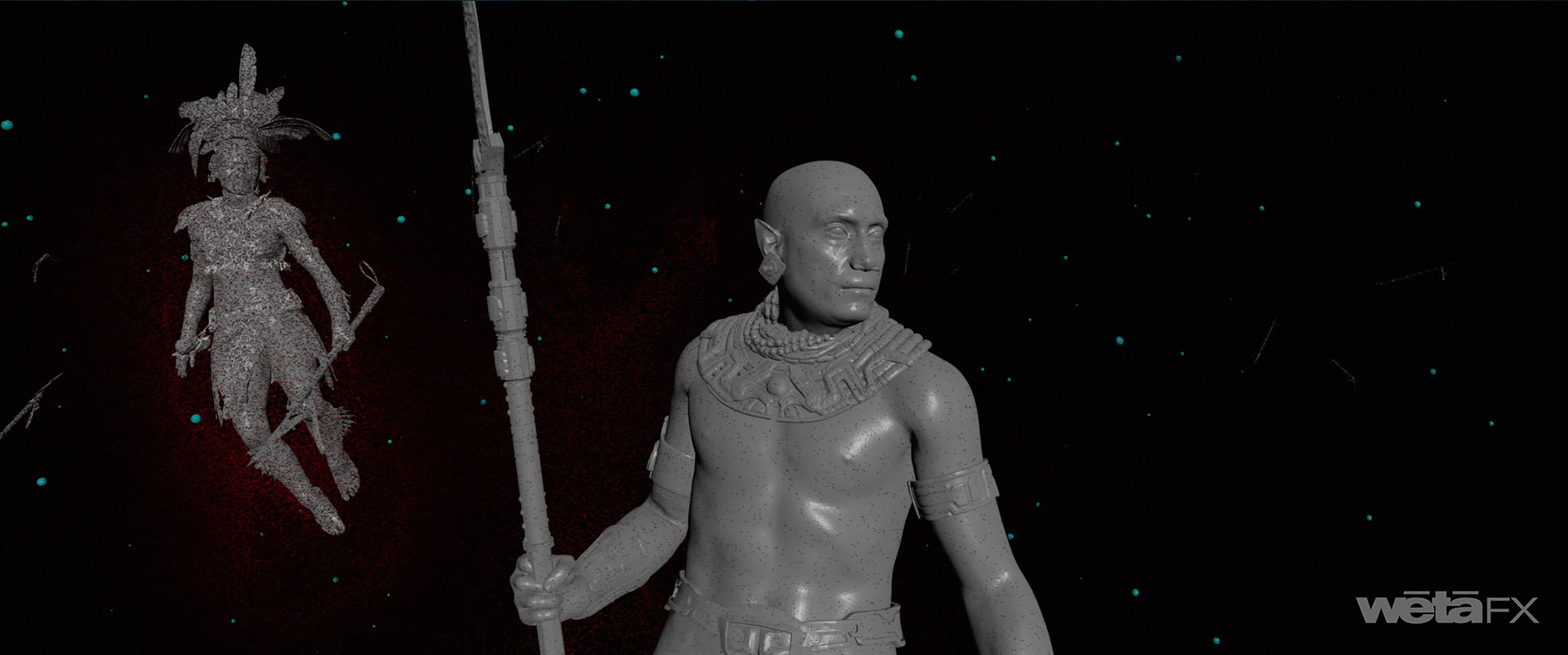
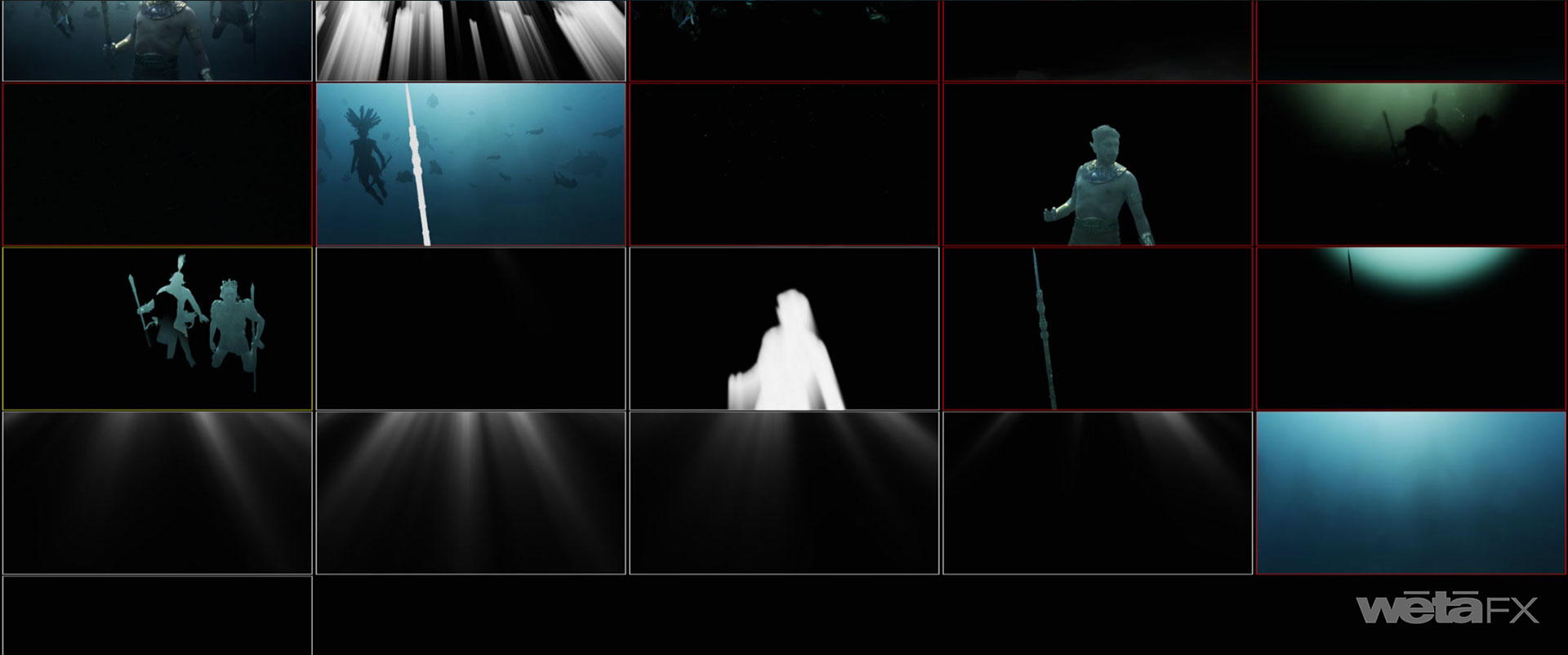
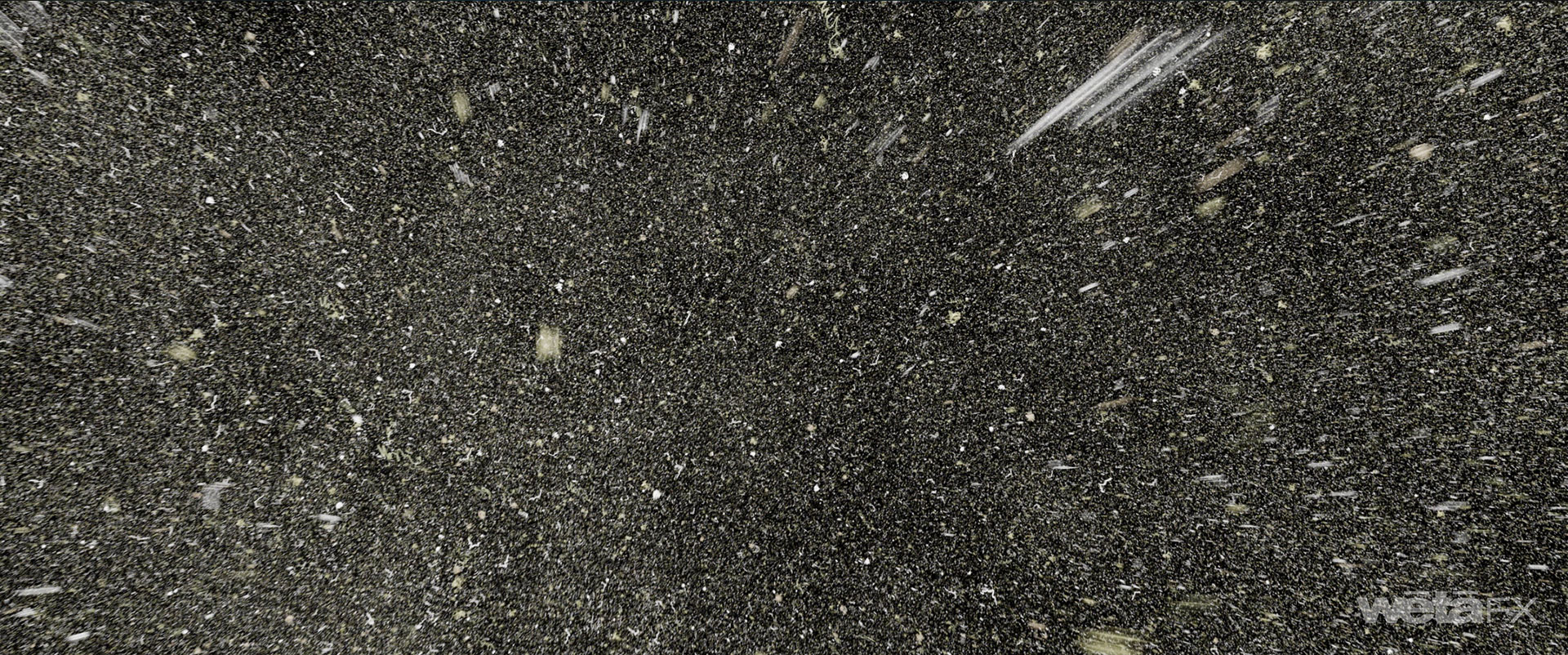
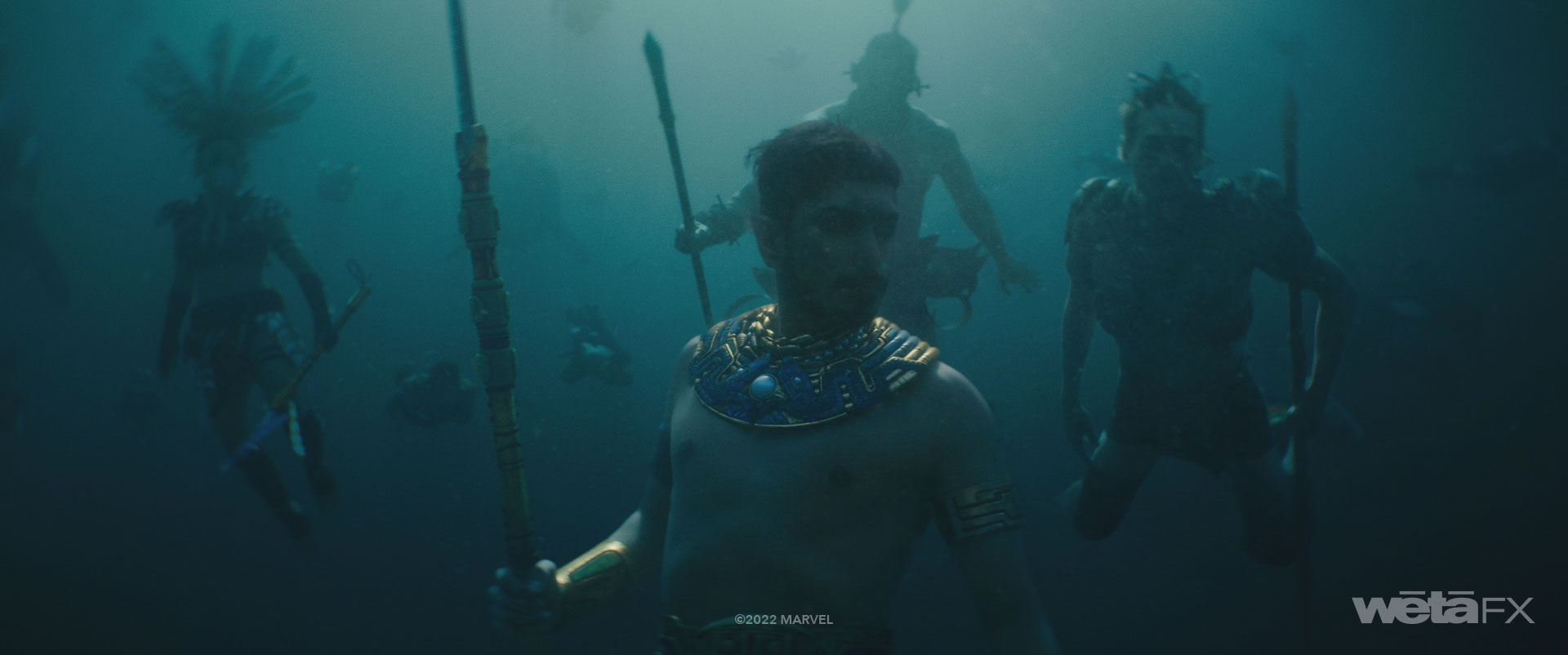
Can you tell us more about the FX work?
Chris: In some deep underwater environments, there is an internal current. This current can influence marine snow, bubbles, debris, and explosions. Marine snow is small particulate that floats around in the ocean. It aided quite a bit in the cloudy water aesthetic of the film. Our effects simulations took advantage of character and vehicle motion in this current to give a fluid feel to its motion.
Which shot or sequence was the most challenging?
Sidney: The discovery of Talokan was challenging in a sense that it was the introduction to a new place that was a significant part of the story. It was a privilege to have the opportunity to story-board, previs, and ultimately execute the sequence.
Chris: I agree, traveling through the city of Talokan was the most challenging. Within a short time, we needed to tell the story of the city and its culture. Our pre-vis and post-vis animation tools allowed us to animate and edit the travel through this space quickly.
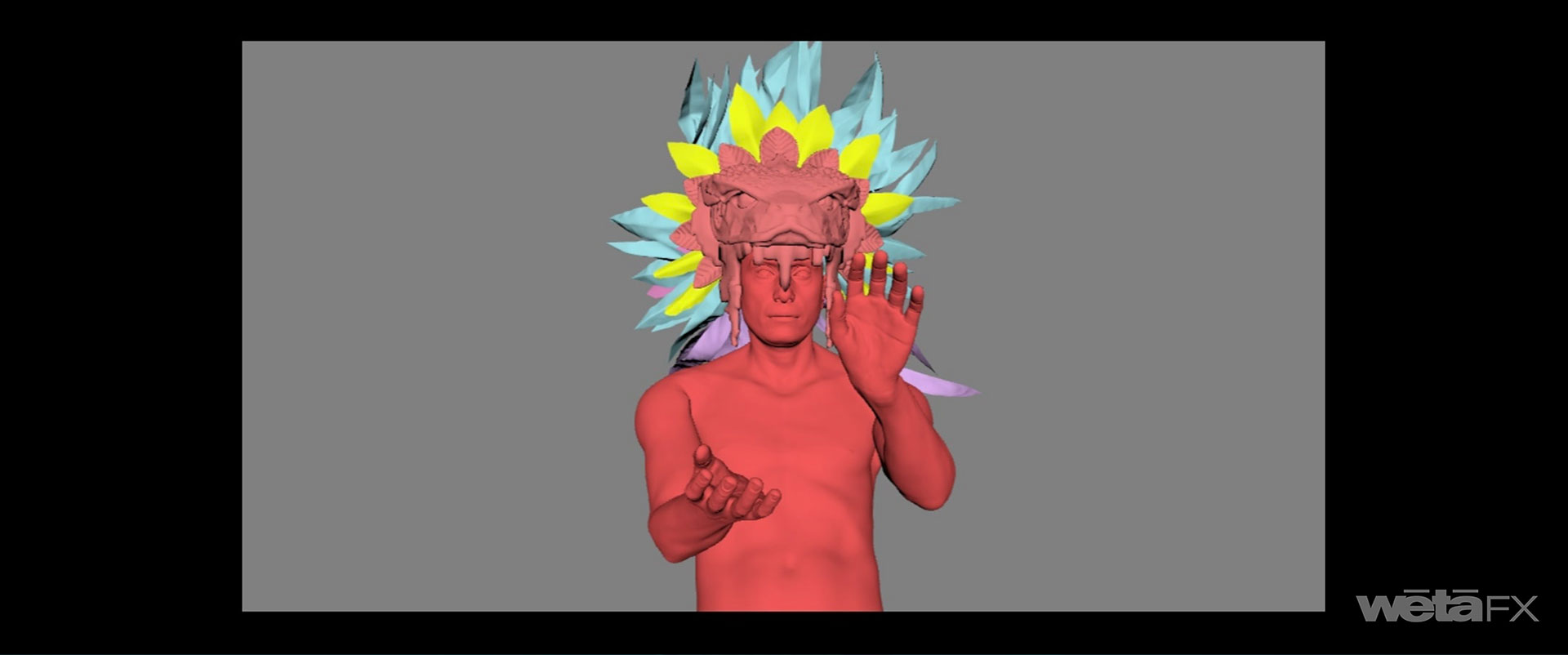
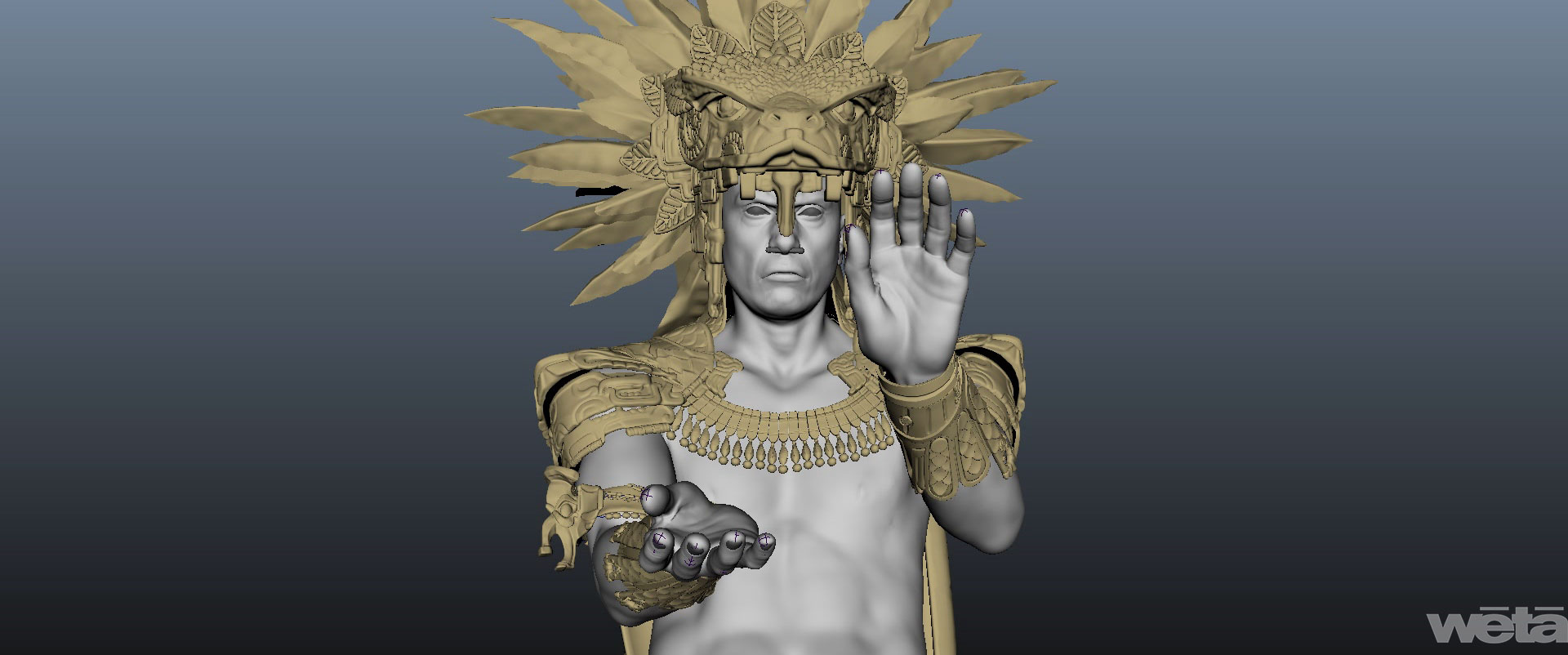
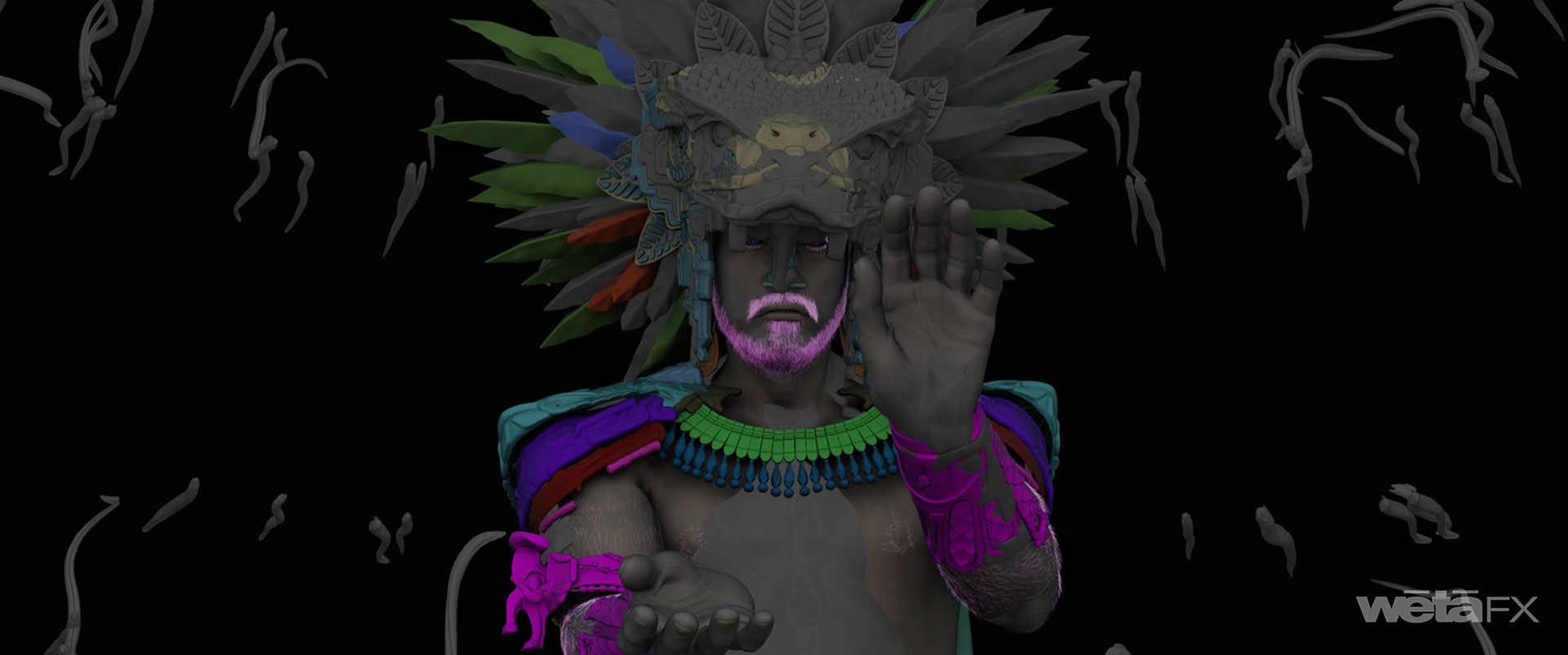
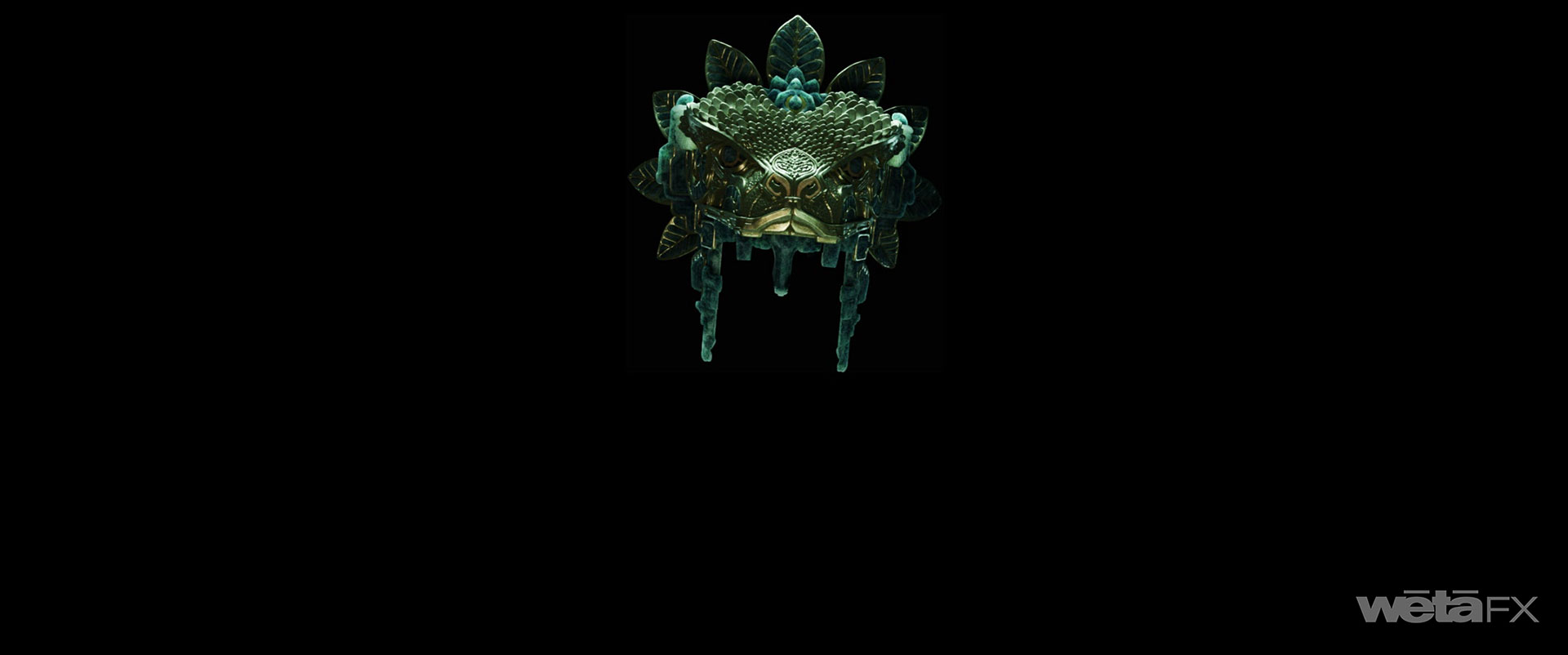
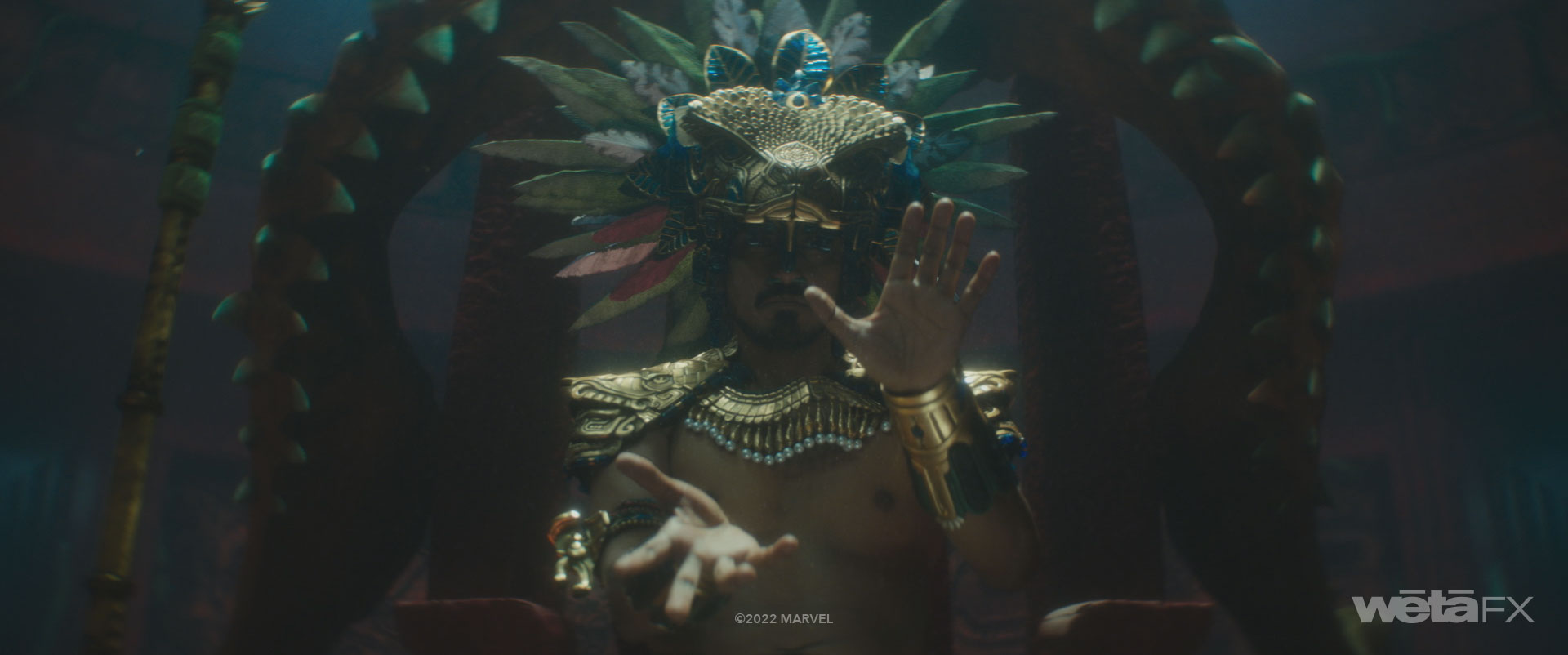
Was there something specific that gave you some really short nights?
Chris: I would say the short nights were caused by up being up late problem solving. We had some complex rendering issues to sort out when it came to our digi-doubles underwater. Getting the skin settings just right to accurately represent the travel of light from the water through the various layers needed to be solved. It took some investigation, but we found an approach which worked well.
What is your favorite shot or sequence?
Chris: I particularly like the mining mission sequence where we are with two divers deep below. The low visibility and the way the digital lens aberrations affect the underwater marine snow give it a nice organic look.
Sidney: I loved the reveal of the underwater world.
What is your best memory on this show?
Sidney: We were told that after we sent through the motion test of the whale emerging from behind the blue wall, the director stared at the shot for over ten minutes, as it was the first time he had seen Shuri underwater since the first film. The making of this film was an emotional ride that was certainly humbling to part of.
Chris: I loved watching the fan reactions to the teaser and trailers when they were released. Seeing people react to the effects we had been working on for over a year was motivating.
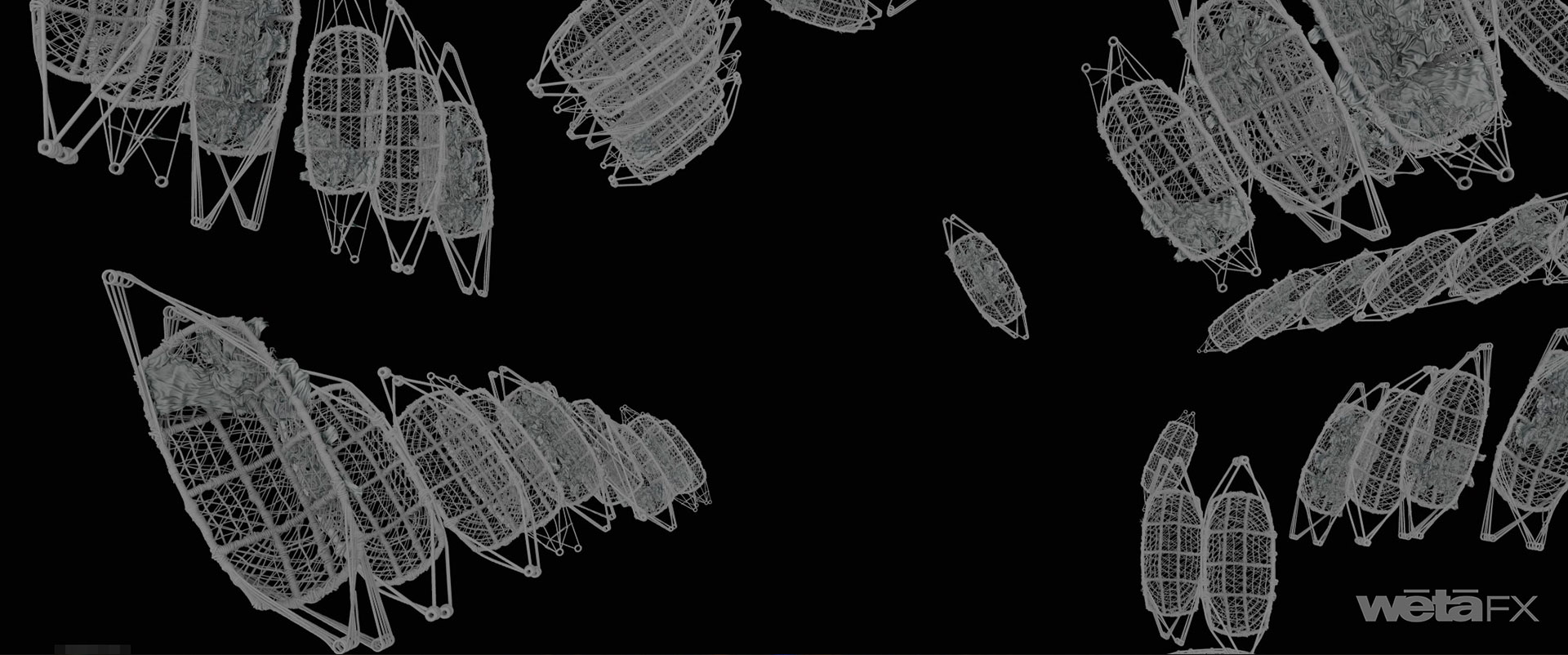
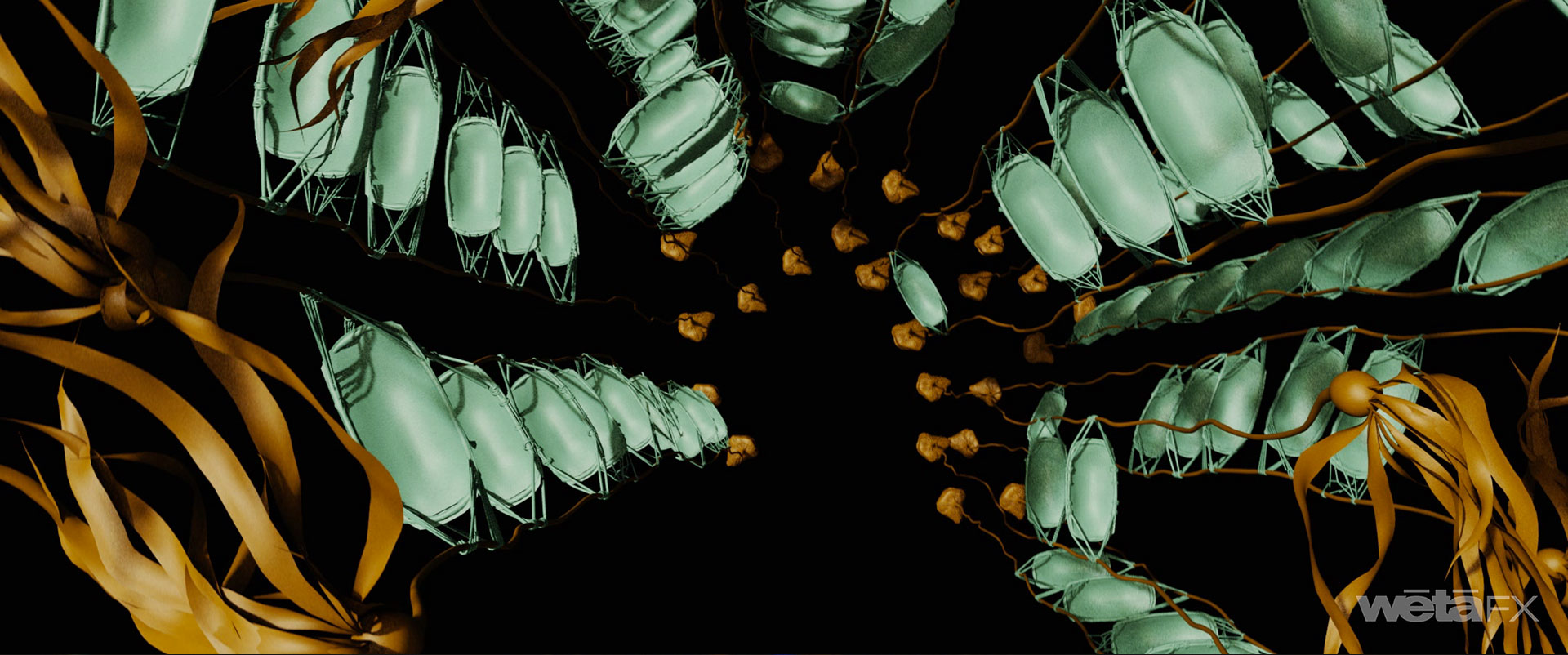
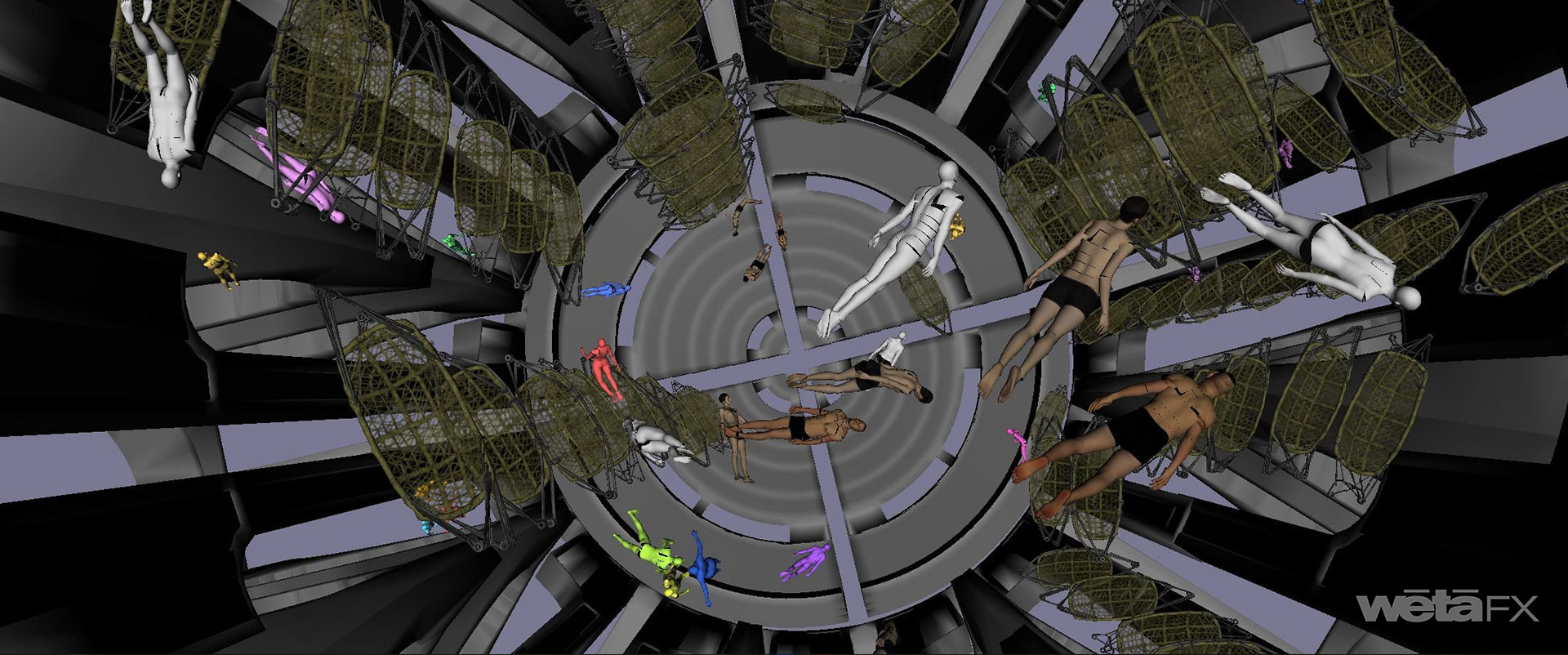
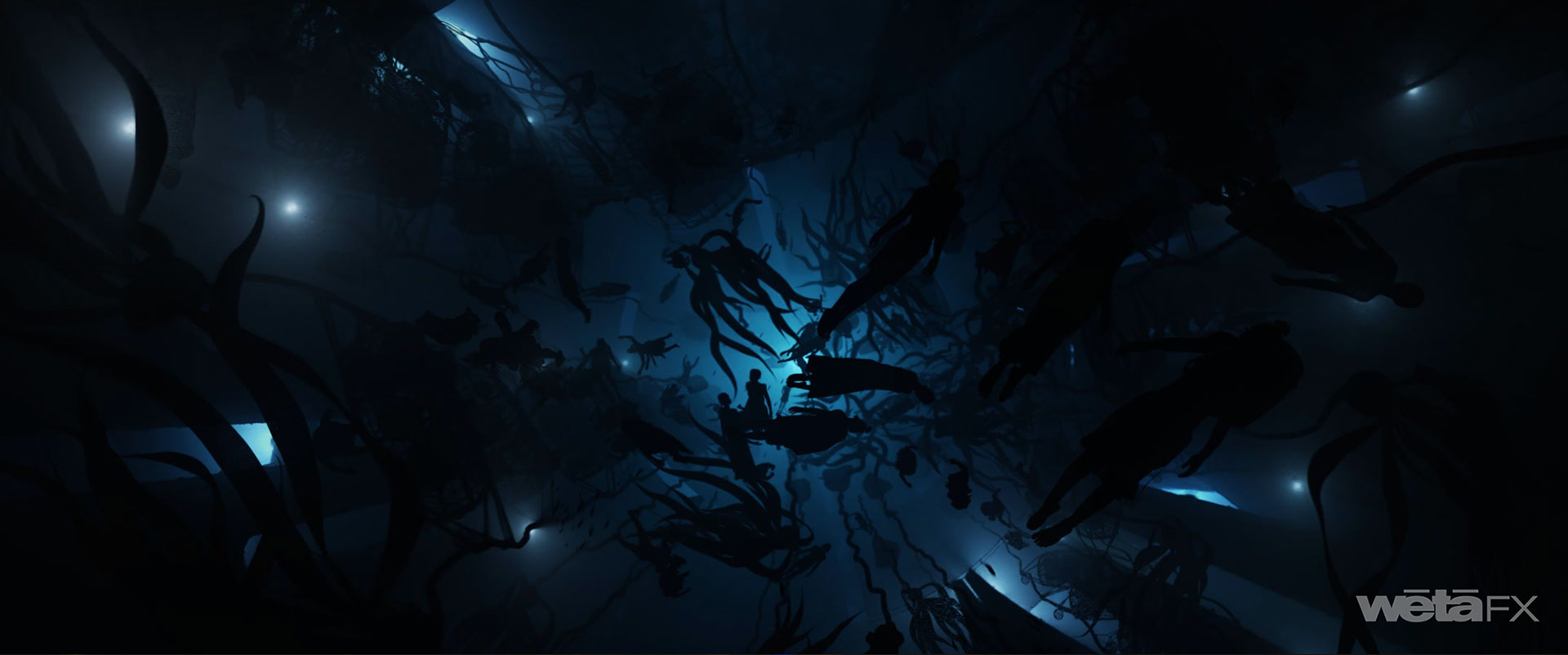
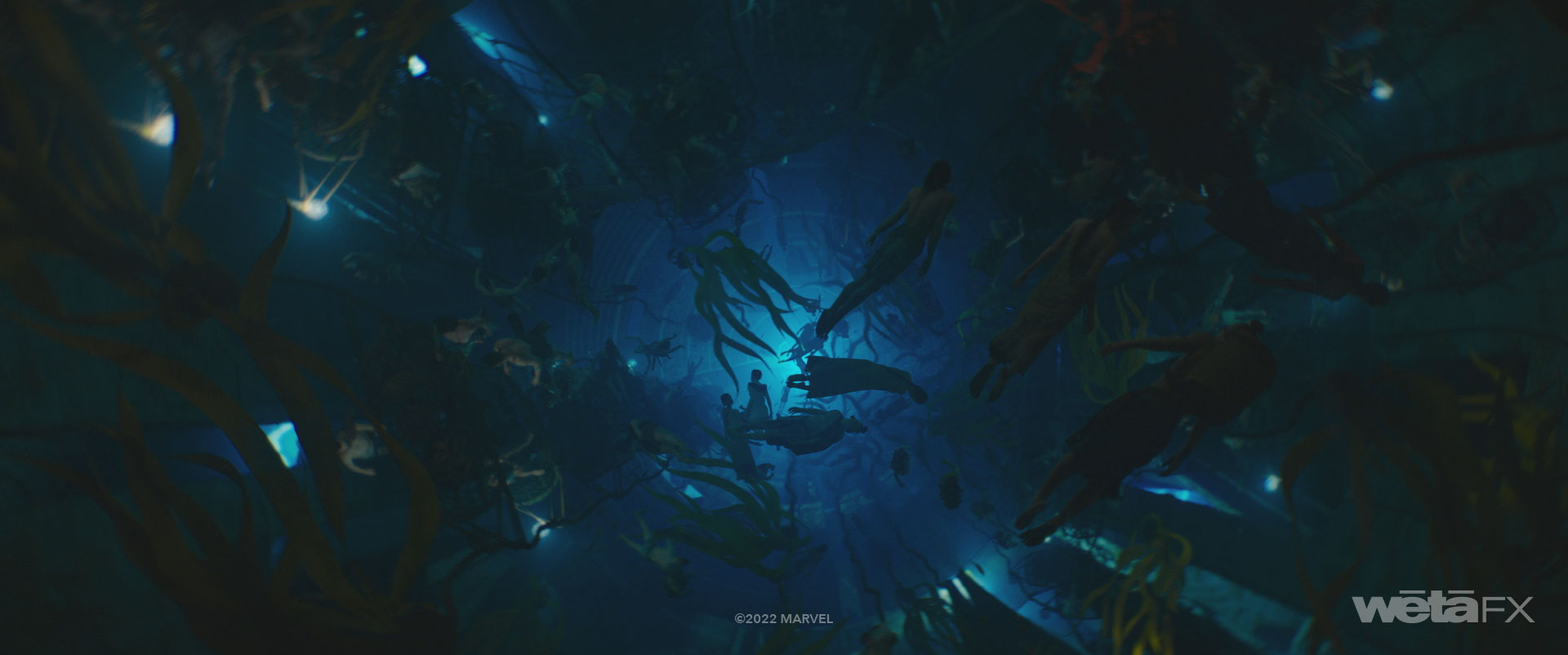
How long did you work on this show?
Chris: Over two years.
Sidney: I was on it for 9-12 months.
What’s the VFX shots count?
Chris: Around 200 for our sections of the film.
What was the size of your team?
Chris: Over 390 people worked on the project.
What is your next project?
Sidney: I’m working on multiple projects, including an upcoming Marvel film.
Chris: I’m in the early stages of a new project.
A big thanks for your time.
WANT TO KNOW MORE?
Weta FX: Dedicated page about Black Panther: Wakanda Forever on Weta FX website.
Geoffrey Baumann: Here is my interview of Geoffrey Baumann, Production VFX Supervisor & Second Unit Director.
Disney+: You can now watch Black Panther: Wakanda Forever on Disney+.
© Vincent Frei – The Art of VFX – 2023




